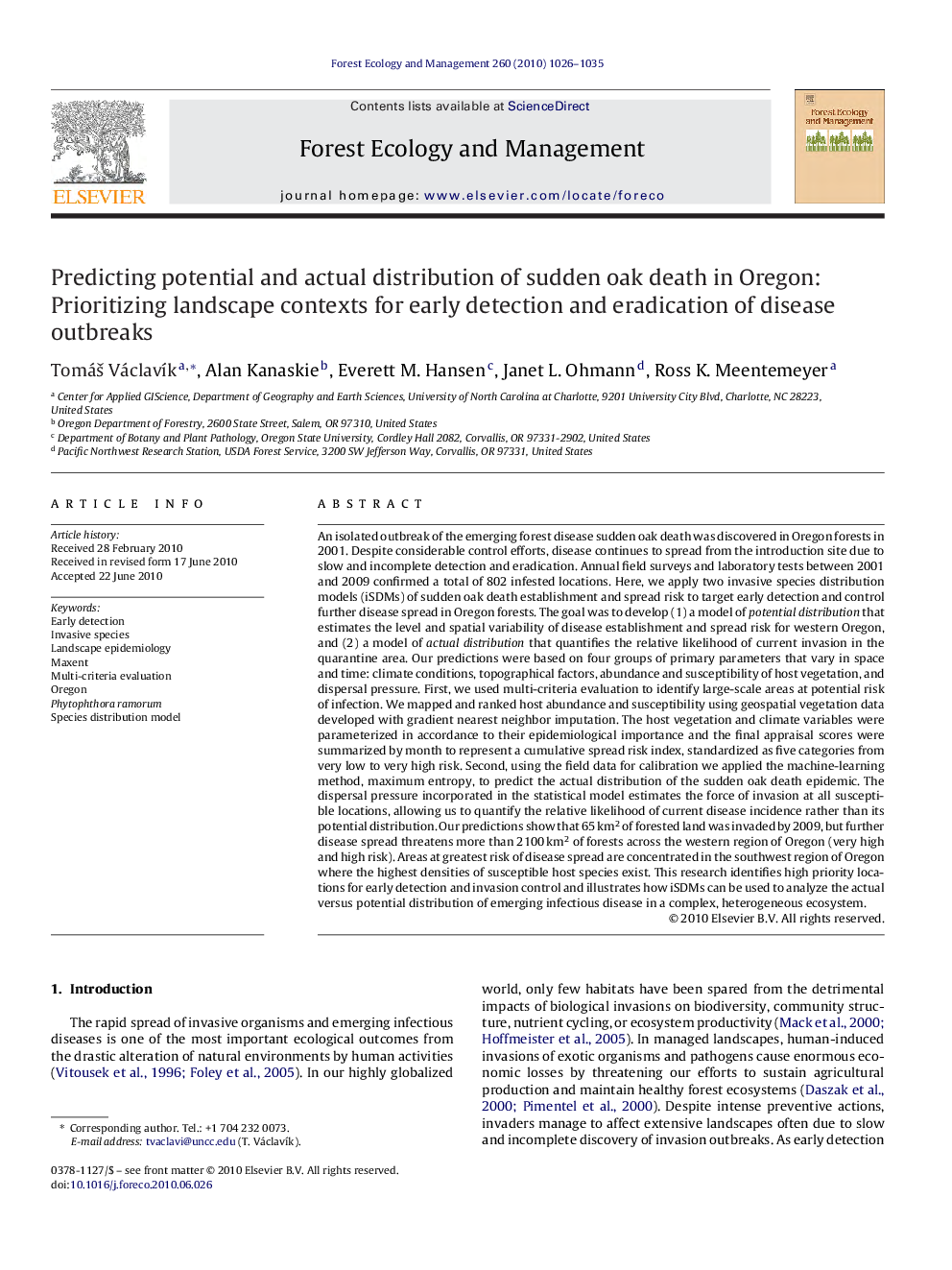| کد مقاله | کد نشریه | سال انتشار | مقاله انگلیسی | نسخه تمام متن |
|---|---|---|---|---|
| 88429 | 159302 | 2010 | 10 صفحه PDF | دانلود رایگان |

An isolated outbreak of the emerging forest disease sudden oak death was discovered in Oregon forests in 2001. Despite considerable control efforts, disease continues to spread from the introduction site due to slow and incomplete detection and eradication. Annual field surveys and laboratory tests between 2001 and 2009 confirmed a total of 802 infested locations. Here, we apply two invasive species distribution models (iSDMs) of sudden oak death establishment and spread risk to target early detection and control further disease spread in Oregon forests. The goal was to develop (1) a model of potential distribution that estimates the level and spatial variability of disease establishment and spread risk for western Oregon, and (2) a model of actual distribution that quantifies the relative likelihood of current invasion in the quarantine area. Our predictions were based on four groups of primary parameters that vary in space and time: climate conditions, topographical factors, abundance and susceptibility of host vegetation, and dispersal pressure. First, we used multi-criteria evaluation to identify large-scale areas at potential risk of infection. We mapped and ranked host abundance and susceptibility using geospatial vegetation data developed with gradient nearest neighbor imputation. The host vegetation and climate variables were parameterized in accordance to their epidemiological importance and the final appraisal scores were summarized by month to represent a cumulative spread risk index, standardized as five categories from very low to very high risk. Second, using the field data for calibration we applied the machine-learning method, maximum entropy, to predict the actual distribution of the sudden oak death epidemic. The dispersal pressure incorporated in the statistical model estimates the force of invasion at all susceptible locations, allowing us to quantify the relative likelihood of current disease incidence rather than its potential distribution. Our predictions show that 65 km2 of forested land was invaded by 2009, but further disease spread threatens more than 2100 km2 of forests across the western region of Oregon (very high and high risk). Areas at greatest risk of disease spread are concentrated in the southwest region of Oregon where the highest densities of susceptible host species exist. This research identifies high priority locations for early detection and invasion control and illustrates how iSDMs can be used to analyze the actual versus potential distribution of emerging infectious disease in a complex, heterogeneous ecosystem.
Research highlights▶ iSDM is crucial for predicting potential and actual distribution of forest pathogens. ▶ Potential spread of P. ramorum threatens over 2100 km2 of forests in western Oregon. ▶ Actual P. ramorum invasion in 2009 was predicted across 65 km2 of forested land. ▶ Greatest risk is concentrated in southwest Oregon where high densities of hosts exist. ▶ Presented models prioritize locations for early detection and invasion control.
Journal: Forest Ecology and Management - Volume 260, Issue 6, 15 August 2010, Pages 1026–1035